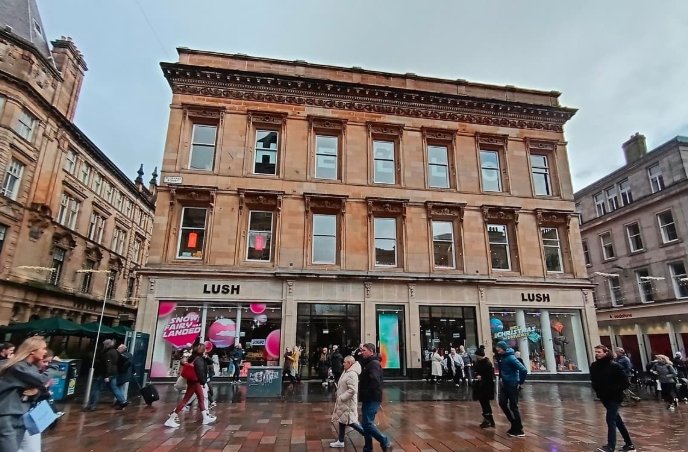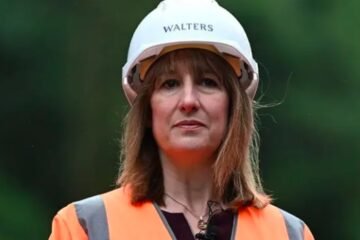Investor and occupier interest in Scotland’s commercial property sector is picking up pace — and fast. The first quarter of 2025 saw demand spike to levels not seen since 2022, according to new data from the RICS Commercial Property Monitor.
The sharpest jump came from occupier demand across offices, industrial sites, and retail units — with expectations now rising for rental growth and capital value increases across the board. But while optimism is growing, caution still lingers beneath the surface.
Occupiers Drive the Momentum
There’s real movement again in Scotland’s commercial property sector, especially on the occupier side.
Demand rose at its fastest rate in three years. Survey responses showed a net balance of 21% reported increased interest — more than double the previous quarter’s 10%. It’s a notable surge, especially in a market still finding its feet post-COVID and amid ongoing geopolitical uncertainty.
The breakdown tells a story of shifting economic priorities:
-
A net balance of 14% saw more demand for office space
-
Industrial properties saw the biggest lift at 37%
-
Retail demand crept up too, with a net balance of 12%
That sharp rise in industrial demand? Likely a sign of strengthening supply chains and warehousing needs. Meanwhile, the retail bounce — however modest — hints at renewed consumer confidence in city centres like Glasgow and Edinburgh.

Rental Expectations Soar to 10-Year Peak
If demand holds steady, rents are set to climb. And by quite a bit.
For the first time in over a decade, more than 30% of Scottish surveyors expect rental values to rise in the coming quarter. To be precise, a net balance of 32% predict increases — a sentiment not seen since well before the pandemic disrupted the commercial leasing landscape.
One Scottish surveyor said, “The market’s showing real signs of recovery, but we’re not out of the woods. External shocks could still knock this momentum off course.”
That cautious optimism is echoed across the industry. Inflation, interest rates, and international unrest remain potential drags on growth. Still, landlords are preparing for firmer rental conditions.
Here’s how sentiment stacks up across the sectors:
| Sector | Net Balance Expecting Rent Rise |
|---|---|
| Offices | +25% |
| Industrial | +38% |
| Retail | +11% |
The table shows where the money is flowing — and where confidence is clearly stronger.
Investors Turn Selective, but Office and Industrial Still Attract
While investor appetite didn’t spike quite as dramatically as occupier demand, the trend is still upward.
A net balance of 18% reported increased investor enquiries across Scotland in Q1. That’s a notable shift from previous stagnation. Office and industrial sectors pulled in the most interest, with net balances of 25% and 29%, respectively.
Retail, on the other hand? Flat as a pancake.
There’s still hesitance when it comes to long-term plays in shopping units, especially in smaller towns. E-commerce disruption and consumer behaviour changes haven’t fully stabilised yet. Investors know it.
But those looking at logistics, warehousing, and prime-grade offices are starting to open their wallets again — carefully, but with growing confidence.
Capital Values Expected to Rise — But Gently
Looking ahead, expectations are tilting upward for capital values. Across all sectors, 11% of respondents see values rising over the next quarter.
Zoom out to the full-year view, and that confidence grows even stronger. A net balance of 35% expect capital values to rise over the next 12 months. It’s not explosive, but it’s steady — and steady matters right now.
That said, it’s still a patchy outlook.
Some see opportunities in converting secondary office buildings into residential. Others worry about the lack of modern prime stock. As one Edinburgh-based developer put it, “Rent caps, inflation on build costs, and expensive finance are still big hurdles.”
A single-sentence pause for breath.
So while values are climbing, developers aren’t exactly diving in headfirst just yet.
Uneven Office Sector Splits Market Sentiment
One of the more complex dynamics lies within the office space itself. The gap between prime and secondary space is getting wider.
Prime offices — modern, green, centrally located — are hot right now. But tired, older offices on the outskirts? Not so much.
That’s the “bifurcation” that RICS economist Simon Rubinsohn was talking about. His comment highlighted just how split the market is becoming. While top-tier offices are drawing fresh interest, sentiment around outdated space is still, in his words, “deeply negative.”
Expect to hear more about refurbishments, conversions, and net-zero compliance in the coming months. Tenants want energy-efficient spaces. And those with cash want to invest where demand will stick.
A Word of Warning from the Experts
Despite the upbeat data, nobody’s getting carried away.
World events — particularly President Trump’s renewed tariffs — are still clouding the global economy. The domestic outlook has its share of problems too, including rising National Insurance contributions, which could put pressure on employers.
“Things are improving, yes. But slowly,” one Glasgow-based property consultant said. “We’ve been here before with false dawns.”
There’s also concern about constrained supply. Without more new developments — especially sustainable, modern builds — Scotland’s property market could hit another ceiling.
Still, the direction is clear. Demand is rising. Confidence is returning. And the next few months could define whether this recovery holds — or fizzles out like previous spikes.


















